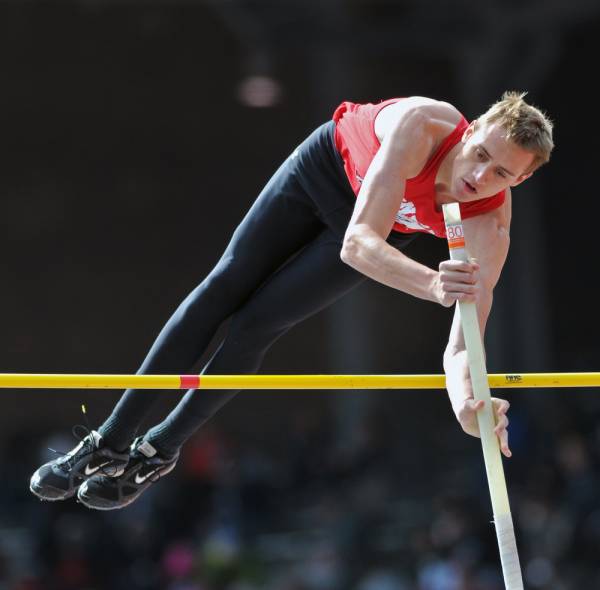Since I can remember, strength enthusiasts have in some way, shape, or form utilized the concept of cycling in their training (whether they know it or not).
Some use different protocols, repetition ranges, modalities, sequences of exercises, volumes, and even percentages to aid in the quest for progression. Another way to cycle an individual’s training is to stagger frequency.
Since I can remember, strength enthusiasts have in some way, shape, or form utilized the concept of cycling in their training (whether they know it or not).
Some use different protocols, repetition ranges, modalities, sequences of exercises, volumes, and even percentages to aid in the quest for progression. Another way to cycle an individual’s training is to stagger frequency.
When training young athletes, I tend to stay with the same exercises so they can develop a better skill set, build more confidence, and therefore, attack the weights more intensely.
I also have them perform full-body workouts that focus primarily on the major muscle groups of the body. These workouts last no more than twenty to thirty minutes, which enables them to be very focused, have more time for academics, work on sports-specific skills, and of course, have some kind of a social life.
Defining the Cycle
Generally, about eight weeks out from the start of an athlete’s season or upcoming event, I will cycle the frequency of strength training sessions so the trainee can taper down with their lifting program and emphasize skill work and relevant conditioning drills. This also provides them the ability to be recovered adequately so they aren’t overtrained and become injured.
Let’s take a look at the following eight-week cycle as an example:
- Weeks 1-2: 3 full-body workouts
- Weeks 3-4: 2 full-body workouts
- Weeks 5-6: upper/lower body split
- Weeks 7-8: 1 full-body workout
Weeks 1 and 2 are straightforward. The training days are performed on non-consecutive days (Monday-Wednesday-Friday, for example) with the workouts consisting of exercises that work the whole body.
The focus should be on multi-joint and compound movements (squats, presses, rows, etc.) and the volume should be kept low – anywhere from a total of 6-10 hard sets per session.
A variety of movement planes should be used in each workout to cover all the bases. If the athlete is in a combative sport, it is strongly encouraged that he or she also perform some direct work to strengthen the neck and hands/grip.
If possible, do not have your athletes do any intense conditioning work on the off days during these weeks, but feel free to encourage them to recreate and perform some stretching or yoga.
Cycle 1: Workouts for Weeks 1-2
All sets are taken to muscular failure using controlled repetitions with a resistance targeted at 12-15 reps for upper body and 15-20 for lower body and abdominals (but do more if you can). Rest briefly (no more than 60 seconds) between exercises but do not rush through the exercises themselves.

It might be a good idea to have an A and B workout to rotate through, using the same exercises but in a different order. Use whatever equipment you have access to and is most appropriate for that particular trainee.
Sample Workout:
- Overhead Press
- Chin/Pulldown
- Squat/Deadlift
- Bicep Curl
- Shrug
- Dip/Pushup
- Abdominal Crunch
Cycle 2: Workouts for Weeks 3-4
Weeks 3 and 4 are again straightforward in that during these two weeks the athlete will perform two full-body sessions (Monday and Friday, for example), which gives the athlete a little more rest between strength training days.
Included will be an intense conditioning day to keep up conditioning levels. Light recreation, stretching, and/or yoga can be performed to help with recovery.
All sets are taken to muscular failure with the first sets resistance targeted at 10-12 reps for upper body and 12-15 reps for lower body (do more if you can). Rest briefly (no more than 60 seconds) between exercises but do not rush through the exercises themselves. Again, include direct neck training with combat athletes.
- Overhead Press
- Squat
- Dip
- Chin
- Shrug
- Romanian Deadlift
- Bicep Curl
- Abdominal Crunch
Cycle 3: Workouts for Weeks 5-6
Weeks 5 and 6 have the athlete splitting the workouts up into upper body only and lower body only days done over three non-consecutive days.
This will have the athlete performing two upper body only workouts and one lower body workout during week 5, and then two lower body and one upper body workout during week 6.
By using the splits the athlete can now focus on supportive exercises along with the major compound movements.
Athlete can include exercises such as hip adduction and abduction, wrist flexion and extension, rotator cuff work, calf work, lower back strengthening, and the like, if these areas weren’t addressed during the full-body sessions.
On lower body day the athlete can perform some sort of interval work via the bike, running, elliptical, or whatever means available.
Sample Upper Body Workout:
- Chin
- Dip
- Row
- Chest Press
- Lateral Raise
- Shrug
- Upright Row
- Wrist Flexion
- Wrist Extension
- Bicep Curl
- Pushup

Sample Lower Body Workout:
- Squat
- Prone Leg Curl
- Hip Abduction
- Hip Adduction
- Calf Raise
- Reverse Lunge
- Back Extension
- Bodyweight Squat
Cycle 4: Workouts for Weeks 7-8
Weeks 7 and 8 have the athlete strength training only once a week. This allows him or her six days of rest between bouts. An inclusion of one to two intense conditioning days is required, with an emphasis on skill work and, most importantly, recovery.
After this cycle is complete the athlete can go directly into the season or event, or restart the cycle again. In this cycle keep the repetitions in the 15-20 range for upper body. This will reduce compressive forces but still have the trainee working very hard.
Cycle Wrap Up
During this eight week training cycle it is important the trainee focus on progression each workout.
Variation in repetition ranges will allow for less stagnation and new goal setting, along with stimulating the muscular and cardiovascular systems.
Given that the young athlete is always on the edge of overtraining, having this variation will allow for sufficient recovery, improved strength and power, enhanced cardiovascular health, and if practiced properly, improved skills in his or her chosen activity.
Photos courtesy of Shutterstock.






